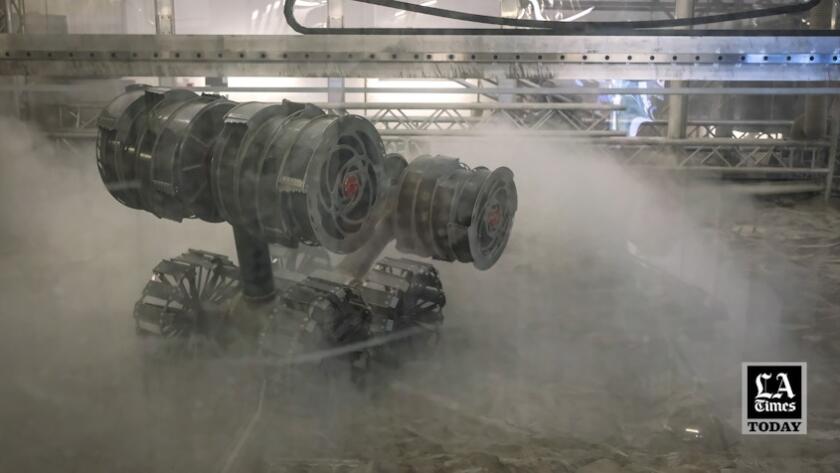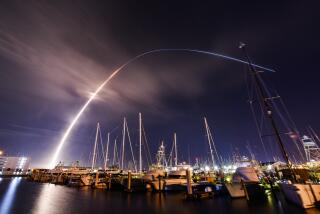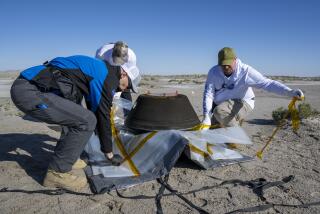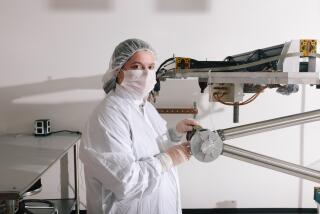NASA’s going back to the moon and must confront a familiar enemy: Dust
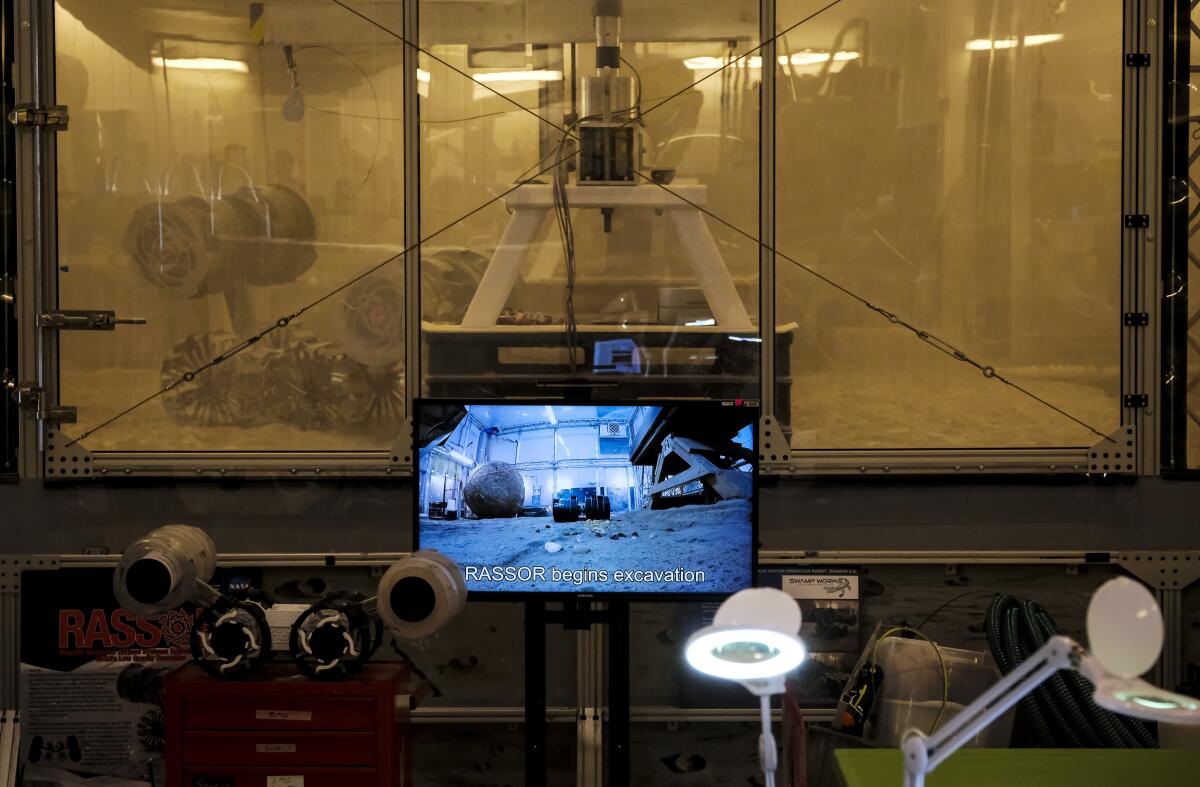
Stardust is romantic, but moon dust a potential hazard as NASA prepares to return to the lunar surface.
- Share via
CAPE CANAVERAL, Fla. — The moon is incredibly hot, and also incredibly cold.
There’s radiation. A thin atmosphere. No air to breathe.
If NASA ever establishes a lunar base — a long-term project advanced Wednesday with the launch of Artemis I — it will have to confront these challenges to human habitation.
It’ll also have to figure out the dust.
Lunar dust is made of gnarly little particles — jagged and sharp-edged grains that add up to a major problem for astronauts and just about any human-made object that’s supposed to land or take off from the moon.
For years, NASA scientists have studied just how much damage that dust, along with lunar gravel and rocks, could cause, particularly when it gets kicked up by rocket engines and starts jetting about at speeds faster than a bullet.
“This is not just fluffy dust that’s going to put a little coat on your ... hardware,” said Philip Metzger, planetary scientist at University of Central Florida who has researched the effects of interplanetary dust since 1997. “This is sandblasting, damaging; it’s rocks at high velocity, sand grains, high-velocity gravel.”
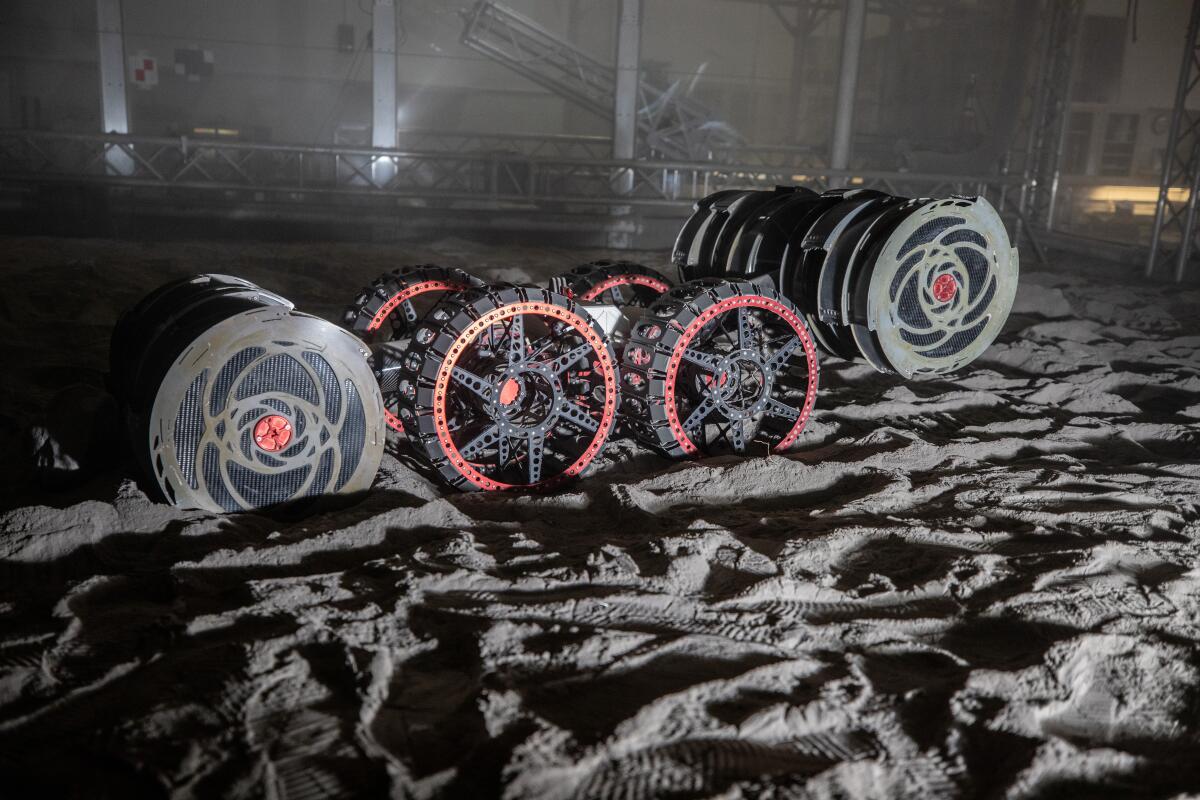
One of the foremost institutions studying lunar dust and its potential effect on human missions is the Swamp Works, a NASA research lab co-founded in 2013 by Metzger, who is now retired from the agency but still collaborates on some projects.
Based at Florida’s Kennedy Space Center in a boxy building once used to train Apollo astronauts, the lab aims to rapidly pioneer and test technologies that would allow humans to live and work on other planetary bodies.
The Artemis 1 mission won’t land on the moon, but the Orion crew capsule will travel around the moon on a 25-day journey to test the spacecraft’s capabilities before humans get onboard next time.
More than a decade ago, Metzger and fellow Swamp Works co-founder Robert P. Mueller tried to warn NASA managers about how dust spewed by rocket exhaust could hinder future lunar missions and how more research and planning needed to be done. They were brushed off.

Today, with the Artemis program starting in full force, and the agency eagerly publicizing the landing of the first woman and first person of color on the moon as soon as 2025 lunar dust research has exploded.
“Everything we do is 10 years too early,” said Mueller, who also serves as senior technologist at Kennedy Space Center. “When everybody else starts to do it, then you know you’ve done the right thing because it’s being embraced.”
Simulated moon dust — once a research commodity peddled among NASA and some university labs — is now commercially produced. NASA recently hosted a media event near Flagstaff, Ariz., showcasing how astronauts will handle the moon’s harsh and dusty environment.
The dust problem is nearly as old as NASA itself. Back during the Apollo program in the 1960s and early 1970s, the astronauts complained that they couldn’t put their gloves back on after three days because lunar dust had degraded the seals.
“It’s very sharp, very fine,” said Mueller. “It just grinds up everything.”
From their living rooms and pickup trucks, amateur radio operators reach out to the International Space Station, circling 240 miles above Earth.
To really get a sense of the problem — and find ways to combat it — the lab trucked in 120 tons of fine, ash-gray powder that was left over from a quarry’s road pavement production line.
NASA came upon the stuff by happenstance. During a research trip near an Arizona quarry, a Swamp Works researcher stepped into a pile of powder with flour-like consistency and sank to his waist. Apollo 17 astronaut Harrison “Jack” Schmitt, who was part of the trip, took one look at the powder, picked it up, kicked it and threw it in the air.
“Yeah, looks like moon dust,” Mueller remembers him saying, before the astronaut walked away.
At the Swamp Works, the simulated moon dust is now housed in a plastic enclosure, 26 feet long and 26 feet wide, where researchers test robotic diggers designed to excavate lunar dirt and rocks and model how far rocket engines will spew moon dust during takeoff and landing. A filtration system prevents excess dust from cycling into the rest of the lab and into researchers’ lungs.
Mueller poked a shovel into a smaller, clear plastic tent located right next to the larger enclosure and scooped up another type of simulated moon dust, this one found by a NASA team from Houston. He let it fall off the edge of the spade, and the cake-flour-like material spread outward like a low, black cloud.
“You don’t want to breathe that, so I’m going to close this,” he said as he zipped up the plastic door.
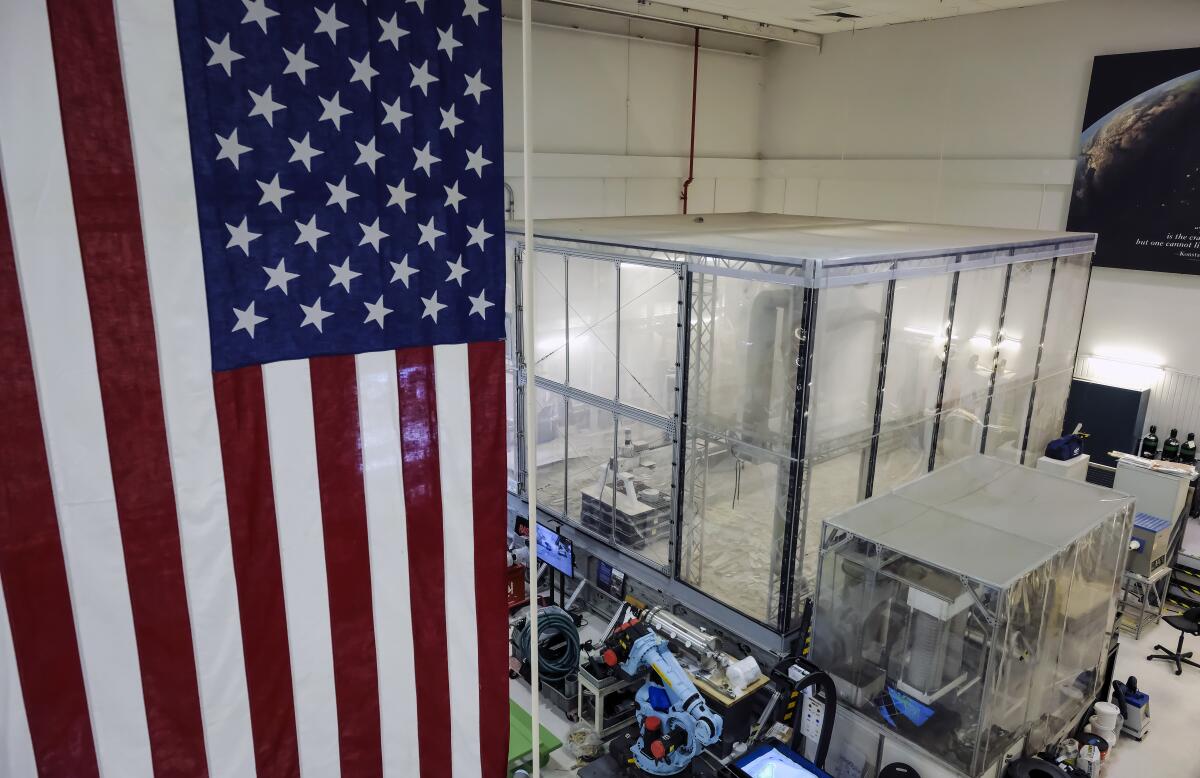
The simulated dust particles — like the real thing — are so fine that they can get stuck in your lungs. To protect themselves, researchers who go into the large bin follow Occupational Safety and Health Administration rules and don protective suits, complete with head coverings, gloves and respirators. Even the lab’s housekeeper sweeping outside wears a respirator.
Still, Mueller has found dust between his toes after a day in the big bin.
“Even in the suits,” he said, “it gets everywhere.”
Mueller made the comments while leading a tour of the lab in 2019. Three years later, the challenges posed by moon dust persist — and still can’t be fully replicated in the big bin.
The bigger the rocket, the more dangerous the plume, meaning lunar dust, gravel and rocks that get kicked up during landing or takeoff will travel at significantly higher speeds than during the Apollo missions.
Apollo moon landing videos don’t do the dust justice. The view from the lunar module’s pilot-side window during the 1971 Apollo 15 mission simply shows haze as dust streaks blow by.
But when Metzger started running computer simulations, the problem became very clear. Researchers’ current best estimate is that dust-sized particles alone can have a velocity between 2,236 mph and 6,710 mph. Bigger particles travel slower, but they’re still nothing to sneeze at — gravel-sized ones can travel 67 mph.
A 40-ton lander could scatter dust 50% faster than the Apollo lander did because of the heavier weight, Metzger said.
“If you had a spacecraft in low lunar orbit and if it happened to come around right at the wrong time ... [the dust] could cause significant damage to optics and other sensitive surfaces — so much so that a sensitive instrument could be ruined with just one exposure,” he said.
Dust poses particular problems for a lunar base. Ideally, future crewed missions would land close to a lunar outpost to minimize astronauts’ travel time between the spacecraft and the habitation module. But that would mean repeated landings around valuable hardware.
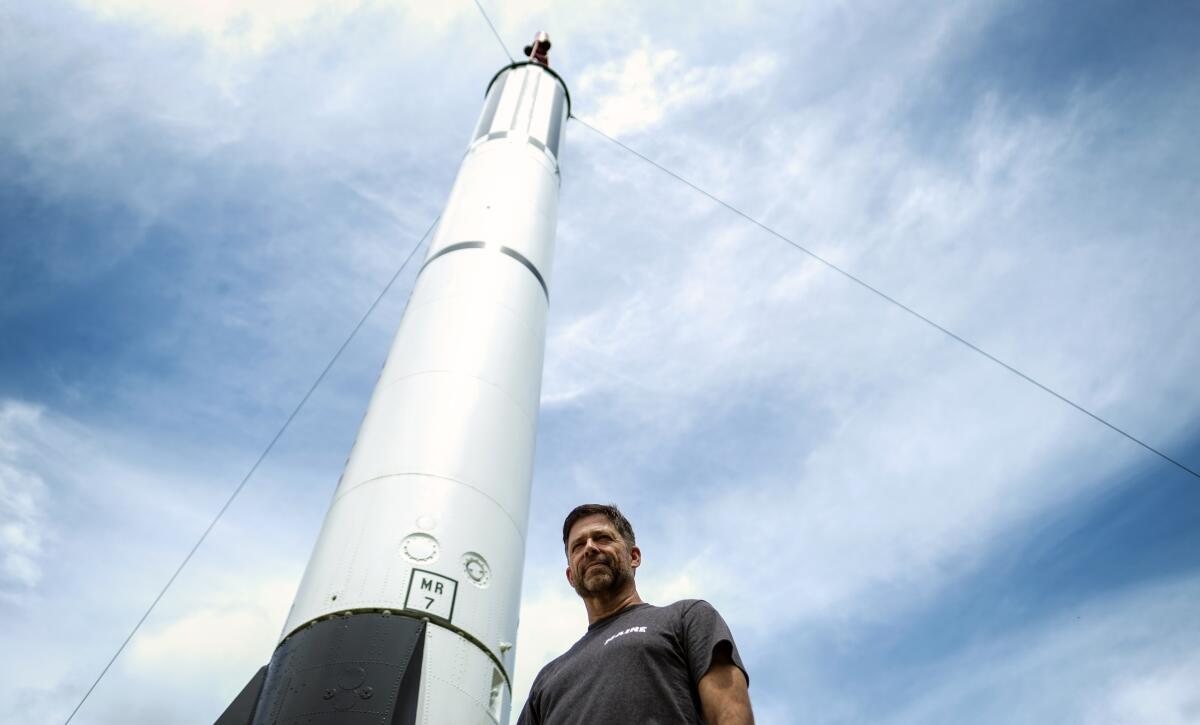
“It’s not just one exposure,” Metzger said. “We might end up having 20 to 30 exposures of sandblasting.”
One way to minimize damage would entail building a landing pad so rockets would have a smooth and soil-stabilized area to operate. But how to get all of the construction materials to the moon?
That’s where the Swamp Works research comes in.
Over the years, the team has experimented with ways to use lunar dust and gravel — yes, the same ones that cause all these problems — to build landing pads.
The best-performing material is what’s called sintered regolith, a powdered version of rock that’s melted just enough to bond everything together but not so much that it becomes brittle glass. The exact melting temperature varies depending on the type of mineral, meaning the researchers will need a sample from the potential landing spot to ensure their calculations line up.
In the meantime, they’re working on how exactly this sintered regolith can be used to build things. During the Swamp Works tour, Mueller brought out what looked like a squashed cow pie. It was the team’s first attempt at using a 3-D printer to create something with their fine, powdery simulated moon dust; but in the years since, researchers progressed to a neatly coiled column — a large coiled cone that could serve as a roof, a wheel and even stone-like pavers that can fit together.
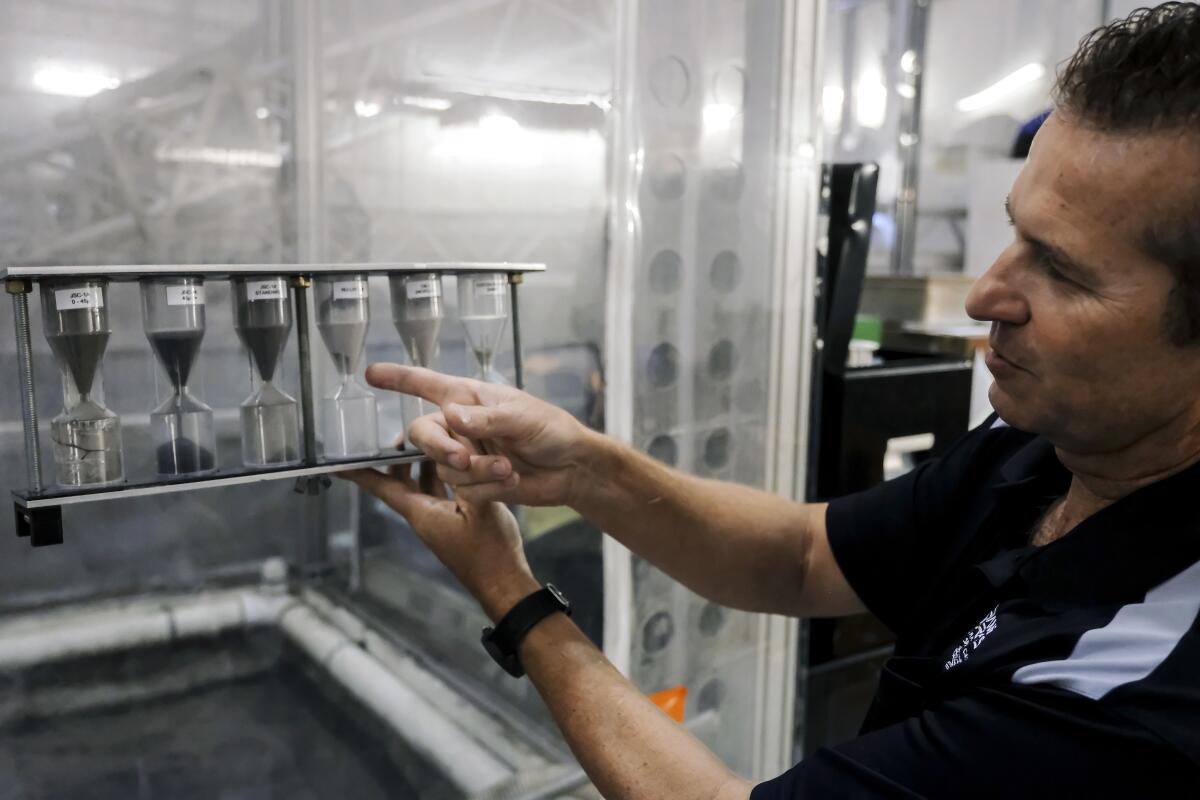
“It is the solution in the long run,” Mueller said recently of permanent landing pads.
The idea of using resources found on planetary bodies for human habitation is not new. It’s what spurs ideas of mining the moon or Mars for elements that could make rocket propellant, which would allow for more exploration without lugging additional fuel.
Not everyone in NASA is convinced that a landing pad made from the moon is the way to go.
For one, it would be expensive and time-consuming to make. And if a mission is going to multiple locations on the moon, it might not make much sense to build a landing pad at each place. That’s why the Swamp Works also is looking at shorter-term ideas, such as a liquid polymer that would be sprayed by a small rover and cured with the ultraviolet light from the sun into a sort of temporary landing zone.
“Think of it like an airport with a grass landing strip, versus an airport with a concrete runway,” Mueller said. “It’s a different level of mitigation, and it wouldn’t be permanent — maybe lasts for one or two landings.”
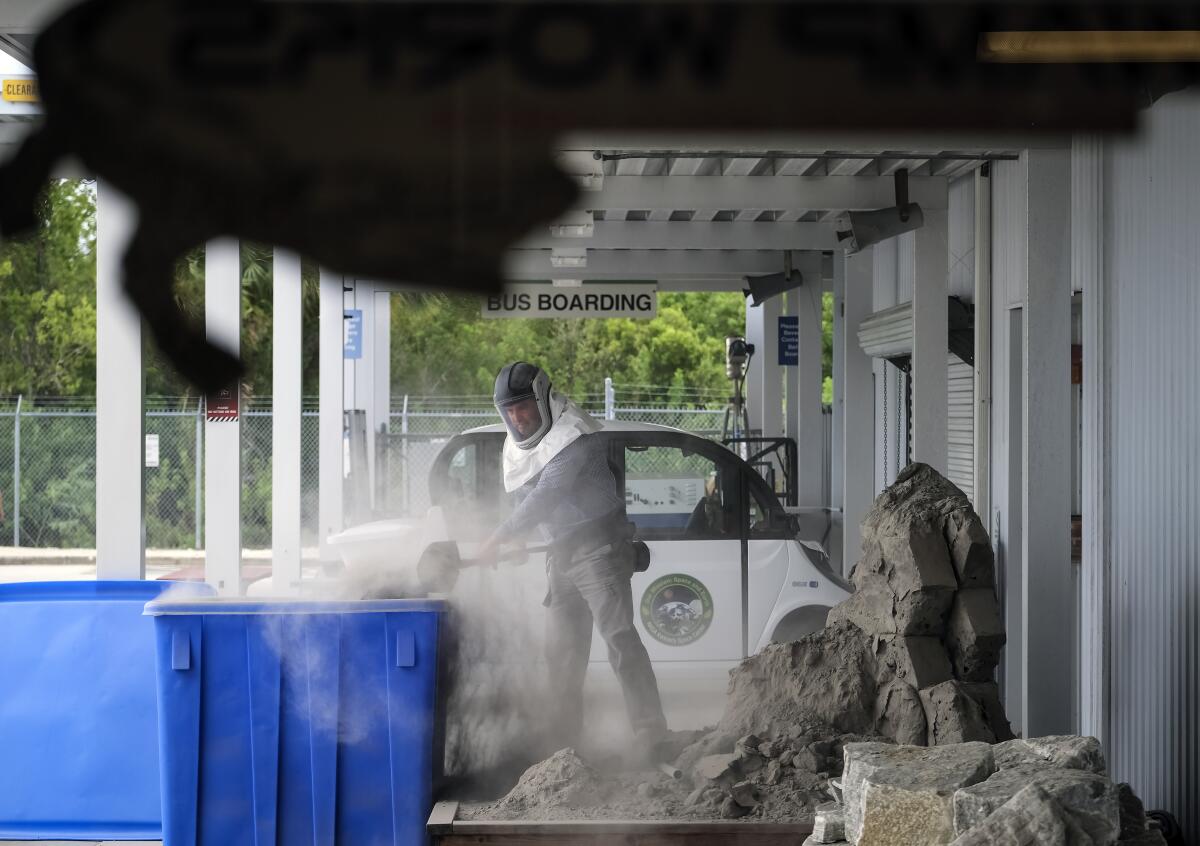
SpaceX’s Starship lander will attempt to land on the moon later this decade without a landing pad by moving its thrusters to the top of the rocket to try to mitigate the dust spew.
Even further out, though, the team’s research has implications beyond the lunar program. There’s dust on Mars, too.
- Share via
Watch L.A. Times Today at 7 p.m. on Spectrum News 1 on Channel 1 or live stream on the Spectrum News App. Palos Verdes Peninsula and Orange County viewers can watch on Cox Systems on channel 99.
More to Read
Inside the business of entertainment
The Wide Shot brings you news, analysis and insights on everything from streaming wars to production — and what it all means for the future.
You may occasionally receive promotional content from the Los Angeles Times.
